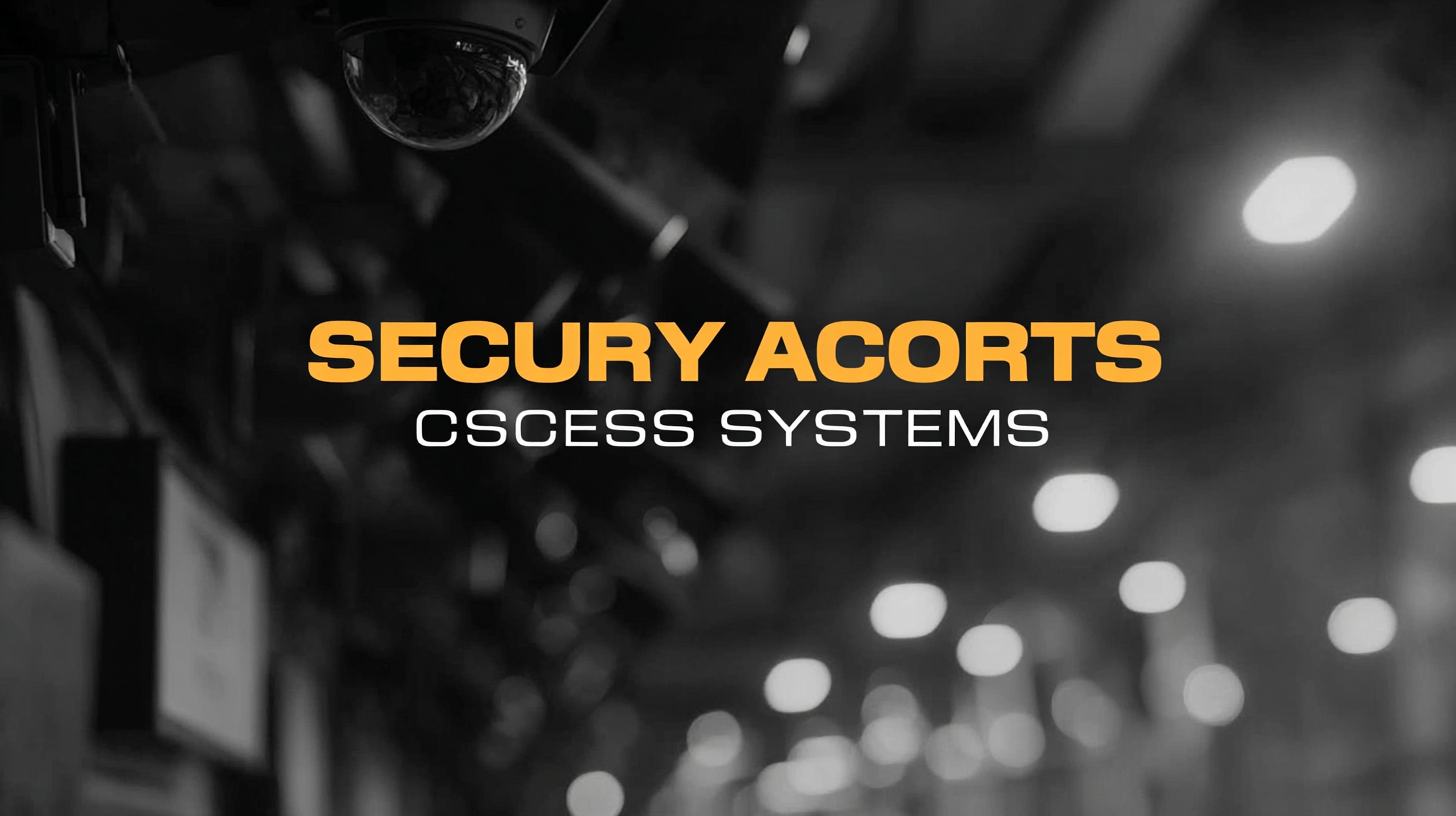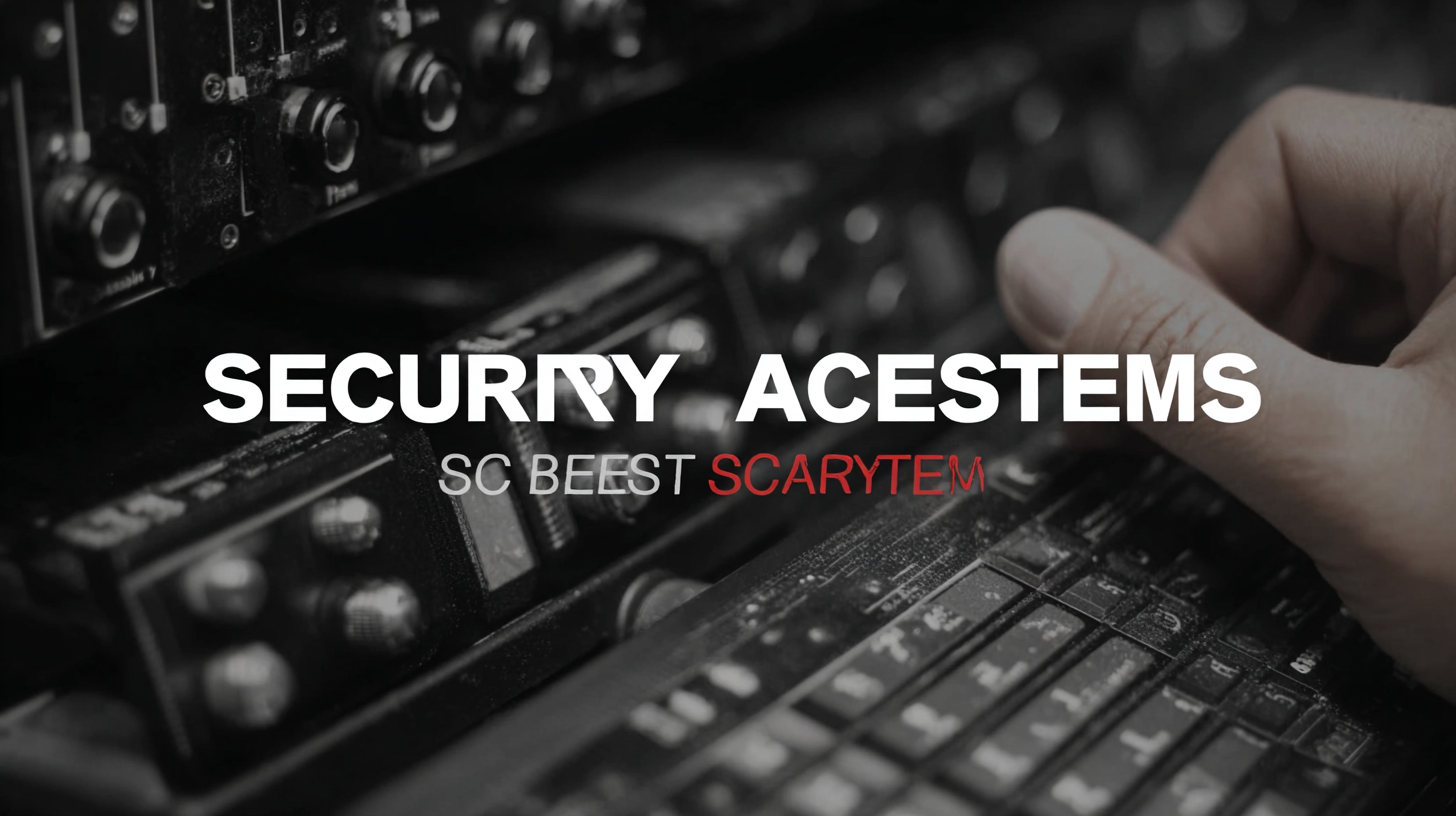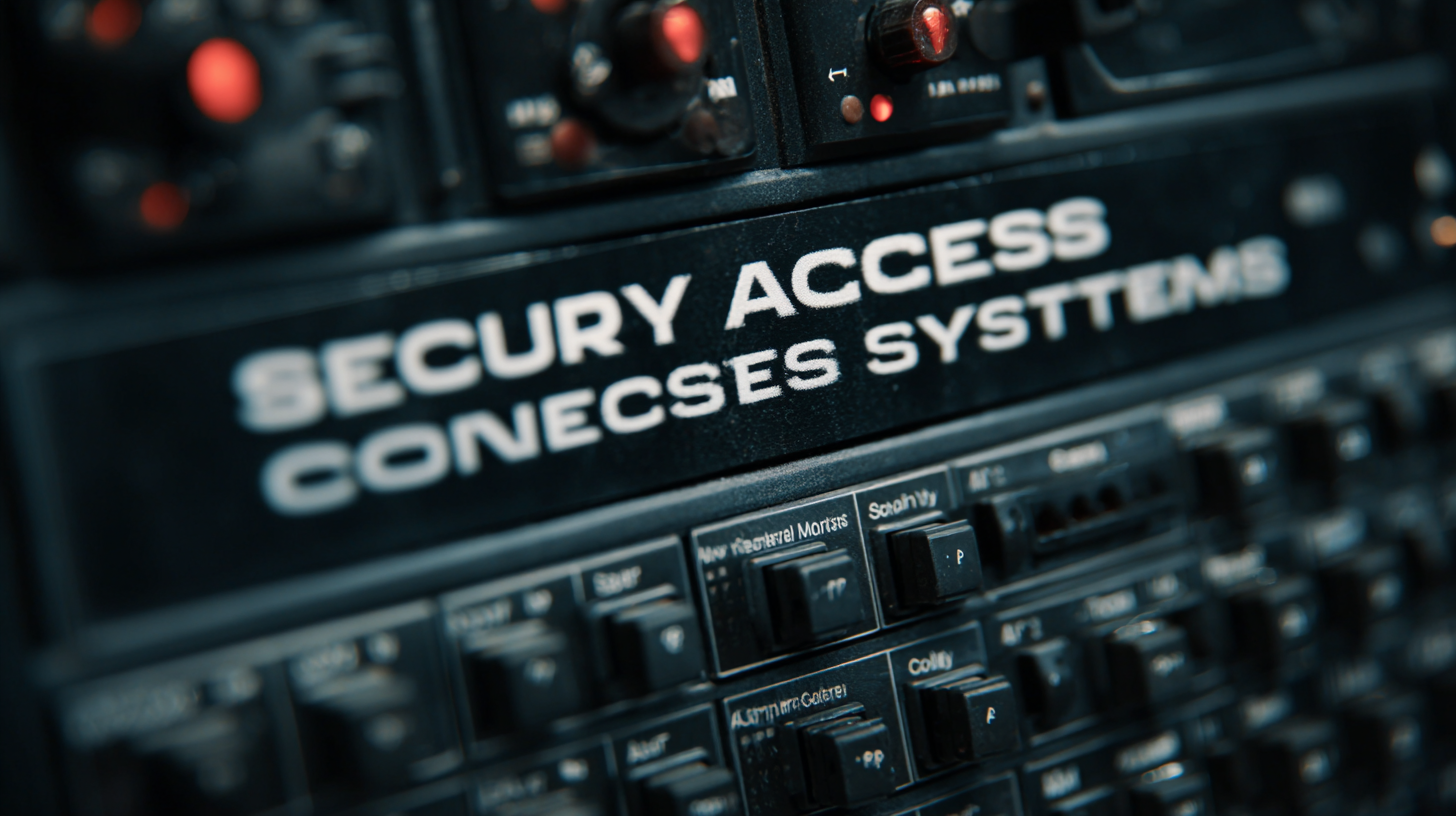Understanding Import and Export Certifications for Best Security Access Control Systems
In today's increasingly interconnected world, understanding import and export certifications is vital for businesses looking to enhance their Security Access Control Systems. These certifications not only ensure compliance with international standards but also play a crucial role in the seamless integration of advanced technologies that protect physical and digital assets. As companies strive to implement robust security measures, navigating the complex landscape of certifications can seem daunting. This blog aims to guide you through the essential steps and considerations for obtaining the necessary certifications, empowering you to choose the best Security Access Control Systems for your needs. With the right knowledge, organizations can effectively safeguard their premises while adhering to global regulations, ultimately fostering a secure environment for both employees and clients.

What Are Import and Export Certifications in Security Access Control Systems?
Import and export certifications play a crucial role in the security access control systems industry, ensuring that products meet governmental and international standards. These certifications guarantee that the products comply with necessary regulations, enhancing their reliability and effectiveness in securing environments. According to a report by MarketsandMarkets, the global access control market is projected to reach $10.4 billion by 2025, indicating a growing demand for certified systems that adhere to safety and security protocols.
The importance of these certifications cannot be understated. They not only facilitate smoother trade processes across borders but also instill confidence in consumers regarding the security measures in place. For instance, products certified under the ISO/IEC 27001 standard demonstrate an organization’s commitment to information security management systems. With such recognition, companies are better positioned to penetrate international markets, as certifications often serve as prerequisites for sales agreements.

The Importance of Compliance with Global Standards for Security Systems
Compliance with global standards is critical in the realm of security access control systems. Organizations that prioritize certifications such as ISO 27001 or the Underwriters Laboratories (UL) mark are demonstrating a commitment to maintaining robust security protocols. According to a report by MarketsandMarkets, the global access control market is expected to reach $14.5 billion by 2025, emphasizing the growing importance of certified systems in safeguarding sensitive information and managing access efficiently. Non-compliance can lead to vulnerabilities that not only jeopardize assets but also risk substantial financial penalties.
To ensure compliance, organizations should conduct regular audits of their security systems and maintain up-to-date documentation regarding their certifications. Engaging with a certified third-party assessor can provide insights into the areas that require improvement or adjustment. Tips for organizations include staying informed about changing regulations and investing in training for employees to recognize the significance of compliance with industry standards.
Additionally, integrating advanced technology, such as biometric systems, can enhance overall security effectiveness. According to a study by Security Magazine, businesses that implemented biometrics reported a 30% reduction in unauthorized access incidents. Regularly reviewing and updating access protocols in line with international standards not only mitigates risks but also builds trust with clients and stakeholders.
Understanding Import and Export Certifications for Best Security Access Control Systems
| Certification | Issuing Authority | Geographical Relevance | Purpose | Compliance Standards |
|---|---|---|---|---|
| ISO 27001 | International Organization for Standardization | Global | Information Security Management | ISO/IEC 27001:2013 |
| CE Marking | European Economic Area | EU Countries | Safety, Health, and Environmental Protection | Various EU Directives |
| UL Certification | Underwriters Laboratories | North America | Product Safety Testing | UL 294 |
| FCC Certification | Federal Communications Commission | United States | EMC Compliance | Part 15 |
| RoHS Directive | European Union | EU Countries | Restriction of Hazardous Substances | Directive 2011/65/EU |
Key Certifications to Look for in High-Quality Access Control Solutions
When selecting high-quality access control solutions, understanding key certifications is critical to ensure maximum security and reliability. Certifications like ISO 27001, which focuses on information security management, demonstrate a manufacturer’s commitment to securing sensitive data. Additionally, UL (Underwriters Laboratories) certifications are vital as they signify products have been tested for safety and security standards, giving consumers peace of mind.
Tip: Always verify that the access control system has undergone rigorous testing and is compliant with recognized certifications. This ensures that you are choosing a product that meets industry best practices.
Another essential certification to consider is CE marking, which indicates that the product meets European Union safety, health, and environmental protection standards. Similarly, FCC certification is important for devices that utilize radio frequencies, ensuring that they do not interfere with other communications. These certifications collectively indicate a level of quality and safety assurance that is essential for any effective security access control system.
Tip: Look for comprehensive documentation of the certifications when evaluating access control products. This not only confirms their credibility but also aids in making informed decisions tailored to your specific security needs.
The Process of Obtaining Import and Export Certifications: A Step-by-Step Guide
Obtaining import and export certifications is crucial for companies in the security access control system industry. The process typically begins with understanding the regulatory landscape of both the exporting and importing countries. According to a report from the Global Trade and Customs Journal, over 30% of businesses encounter significant delays due to non-compliance with certification requirements. This underscores the importance of thorough preparation, which may include consulting with trade experts and conducting research on specific certification standards, such as ISO and CE markings.

The next step involves gathering the necessary documentation. This includes proof of product compliance, safety analyses, and technical specifications. For instance, the International Organization for Standardization (ISO) notes that certifications can enhance a product’s marketability, with certified products typically seeing a 20% increase in demand. Companies must also be prepared for potential audits by certification bodies. Engaging with these organizations early in the process can facilitate a smoother experience and foster a culture of compliance within the company, ultimately leading to higher success rates in securing the necessary certifications.
Common Challenges and Solutions in Navigating Certification for Security Products
Navigating the landscape of import and export certifications for security products can be laden with challenges. One of the most common hurdles is the complexity of regulatory requirements across different countries. Each region may have its own standards and certifications, making it difficult for manufacturers to ensure compliance. For instance, while a product may meet U.S. standards, it might require additional modifications to align with European Union regulations. This inconsistency not only complicates the certification process but can also lead to increased costs and delays in product launches.
To overcome these challenges, companies should invest in thorough research and establish partnerships with compliance experts who are well-versed in international regulations. Creating a comprehensive checklist detailing the required certifications for each target market can streamline the process. Additionally, leveraging technology such as digital compliance management systems can enhance tracking and documentation efforts. By implementing these strategies, businesses can navigate the intricacies of import and export certifications more efficiently, ensuring their security products meet market demands without unnecessary setbacks.
- • HighpowerOne Touchscreen Controller • HighpowerOne Mobile Credential App
- Highpower Management System
- • Pushplate 100 PNZ
- • Pushplate 110 PNZ
- • Pushplate 120/140 PNZ
- • Pushplate 130/150 PNZ
- • Pushplate 200 PNZ
- • Pushplate 100
- • Pushplate 110
- • Pushplate 120/140
- • Pushplate 130/150
- • Pushplate 200
Mechanical Timers
Proximity ID Access Cards and Fobs
Proximity Card Readers
- • Proximity Reader P-300
- • Proximity Reader P-400
- • Proximity Reader P-500
- • Proximity Reader P-620
- • Proximity Reader P-640
- • Proximity Reader P-710
- • Proximity Reader P-900
- • Ranger Proximity Readers
- • Ranger Controls
- • Sure-Fi Wireless Interfaces
Smart Series JX Readers
Electromagnetic Locks
Highpower Power Supplies
• H505
• H512
Security Products Summary
